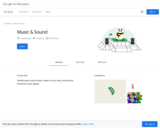
Learn basic coding skills with Google's CS First program!
- Subject:
- Educational Technology
- Professional Learning
- Material Type:
- Lesson Plan
- Provider:
- Provider Set:
- Google for Education
- Author:
- CS First
- Date Added:
- 05/18/2022

Learn basic coding skills with Google's CS First program!
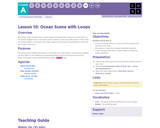
Returning to loops, students learn to draw images by looping simple sequences of instructions. In the previous plugged lesson, loops were used to traverse a maze and collect treasure. Here, loops are creating patterns. At the end of this stage, students will be given the opportunity to create their own images using loops.

Events are a great way to add variety to a pre-written algorithm. Sometimes you want your program to be able to respond to the user exactly when the user wants it to. That is what events are for.
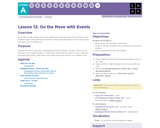
In this online activity, students will have the opportunity to learn how to use events in Play Lab and to apply all of the coding skills they've learned to create an animated game. It's time to get creative and make a story in the Play Lab!
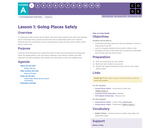
In collaboration with Common Sense Media, this lesson helps students learn that many websites ask for information that is private and discusses how to responsibly handle such requests. Students also find out that they can go to exciting places online, but they need to follow certain rules to remain safe.
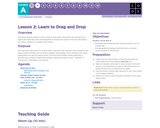
This lesson will give students an idea of what to expect when they head to the computer lab. It begins with a brief discussion introducing them to computer lab manners, then they will progress into using a computer to complete online puzzles.
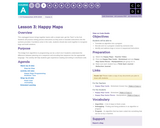
This unplugged lesson brings together teams with a simple task: get the "flurb" to the fruit. Students will practice writing precise instructions as they work to translate instructions into the symbols provided. If problems arise in the code, students should also work together to recognize bugs and build solutions.
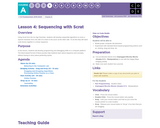
Using Scrat from the Ice Age franchise, students will develop sequential algorithms to move a squirrel character from one side of a maze to the acorn at the other side. To do this they will stack code blocks together in a linear sequence.
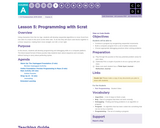
Using characters from the Ice Age, students will develop sequential algorithms to move Scrat from one side of a maze to the acorn at the other side. To do this they will stack code blocks together in a linear sequence, making them move straight, turn left, or turn right.
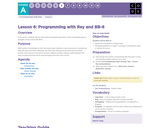
In this lesson, students will use their newfound programming skills in more complicated ways to navigate a tricky course with BB-8.
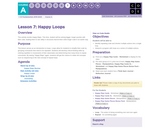
This activity revisits Happy Maps. This time, student will be solving bigger, longer puzzles with their code, leading them to see utility in structures that let them write longer code in an easier way.
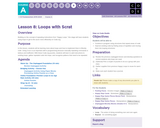
Building on the concept of repeating instructions from "Happy Loops," this stage will have students using loops to get to the acorn more efficiently on Code.org.
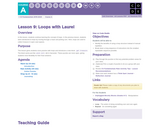
In this lesson, students continue learning the concept of loops. In the previous lesson, students were introduced to loops by moving through a maze and picking corn. Here, loops are used to collect treasure in open cave spaces.
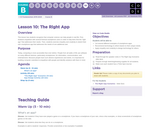
This lesson has students recognize that computer science can help people in real life. First, students empathize with several fictional smartphone users in order to help them find the “right app” that addresses their needs. Then, students exercise empathy and creativity to sketch their own smartphone app that addresses the needs of one additional user.
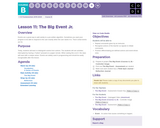
Events are a great way to add variety to a pre-written algorithm. Sometimes you want your program to be able to respond to the user exactly when the user wants it to. That is what events are for.

In this online activity, students will have the opportunity to learn how to use events in Play Lab and apply all of the coding skills that they've learned to create an animated game. It's time to get creative and make a game in Play Lab!
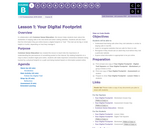
In collaboration with **Common Sense Education**, this lesson helps students learn about the similarities of staying safe in the real world and when visiting websites. Students will also learn that the information they put online leaves a digital footprint or “trail.” This trail can be big or small, helpful or hurtful, depending on how they manage it.
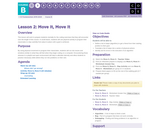
This lesson will work to prepare students mentally for the coding exercises that they will encounter over the length of this course. In small teams, students will use physical activity to program their classmates to step carefully from place to place until a goal is achieved.
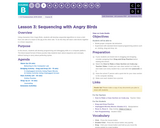
Using characters from Angry Birds, students will develop sequential algorithms to move a bird from one side of a maze to the pig at the other side. To do this they will stack code blocks together in a linear sequence.
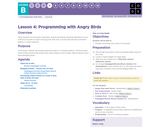
Using characters from the game Angry Birds, students will develop sequential algorithms to move a bird from one side of a maze to the pig at the other side. To do this they will stack code blocks together in a linear sequence.